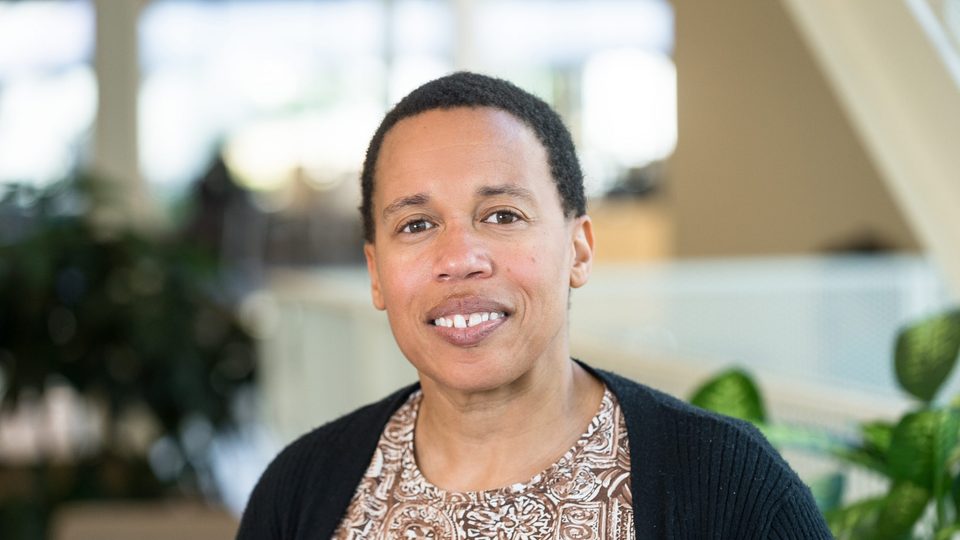Physics Prof Marty Baylor is Leading the Charge on Inclusion, Diversity, and Equity in STEM
Marty Baylor, Chair and Professor of Physics and Astronomy, will run a national program which will improve physics teachers’ ability to address IDE projects in the classroom.

Marty Baylor, Chair and Professor of Physics and Astronomy, is quickly becoming a national leader in promoting inclusion, diversity, and equity (IDE) in physics and STEM as a whole. The recipient of a $200,000 grant from the American Physical Society (APS), Baylor will run a national program which will improve physics teachers’ ability to address IDE projects in the classroom.
“Thinking about diversity and inclusion is just part of who I am and what I’ve been doing,” Baylor said. “It’s not something we as physicists are trained to do and it’s not something that’s easy or comfortable. But STEM is a human endeavor, and IDE work is naturally part of what it means to be a physicist, and what it means to be a scientist.”
A lack of inclusion in the classroom, Baylor said, often gets in the way of students developing necessary skills. “A female student might volunteer or be assigned to do the lab notebook because women are good at writing.” IDE, she added, is not only about recruiting women or minorities into STEM work, but helping all students “develop skills and seeing themselves as being able to do work within the field.”
The two-year APS grant will set up a pilot program to strengthen IDE efforts in physics classrooms across the country. Baylor and other physicists will work in tandem with critical conversation specialists who have particular expertise in holding challenging conversations in the classroom.
“It’s tempting when you have a PhD to think that you know how to do ‘everything’,” Baylor said. “As physicists it’s important to appreciate the expertise of other disciplines, particularly in disciplines that are not STEM.”
The grant will not change things right away — it will take a few years to implement the project in the physics community.
“People are excited about this grant and they think it’s going to change things tomorrow, but the outcomes are not going to be for about two years,” Baylor said.
In the meantime, Baylor continues to have a key influence on IDE work at Carleton and in the international STEM community. Her recent article in Nature, an internationally recognized science periodical, and a forthcoming piece in The Physics Teacher, a journal on STEM pedagogy, spell out the importance of DEI work in STEM and steps educators can take to create a more inclusive community. A particular focus is her “Practicing Professionalism Framework,” which she developed for her classrooms at Carleton.
“It treats students as if they are part of the community,” Baylor said. “And if you’re in the community you need to know what physicists do, what physicist know, and what physicists care about.”
Baylor says students usually expect to learn about what physicists do and know, but not always what physicists care about.
“Physicists care about the history of the field, government funding, the environment, getting physics out into the community, and diversity, equity, and inclusion,” Baylor said.
As a Black woman, Baylor is keenly aware of how her identity shapes students’ perceptions of these issues.
“If I motivate [an awareness of these issues] from my own identity, what happens is students can say ‘Oh, that’s just something Marty cares about because she’s a Black woman.’ But I want them to understand that there are people, who are not Black women, and who may not be a racial or gender minority, who care about this work,” Baylor said.
To show the importance of what physicists care about more broadly, Baylor asks her students on the first day of class to look through APS News — the newsletter of the American Physical Society — and make a list of headlines not related to physics fields, theories, or new devices.
“That starts opening the door to say that in this class, we care about things like physics history and IDE. Because the physics field says: we talk about these things, are you prepared as a physicist to talk about these other topics?”
The framework is just one example of how STEM curricula can accommodate IDE work. While Baylor’s current focus is on physics, she hopes the grant can feed into a follow-up grant which can offer an opportunity to collaborate with other disciplines.
“This is just the beginning,” she said. “It would be great if we can support other areas of STEM using this model — that would be really exciting.”